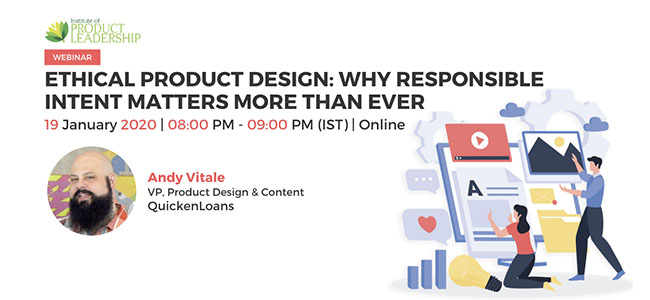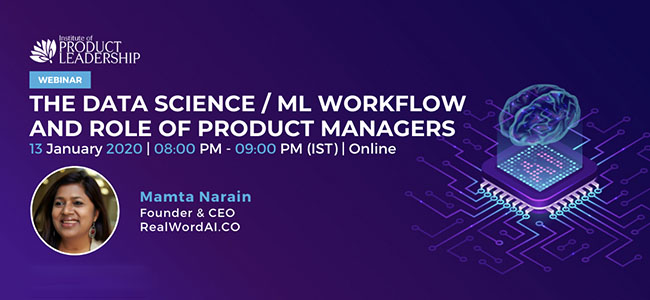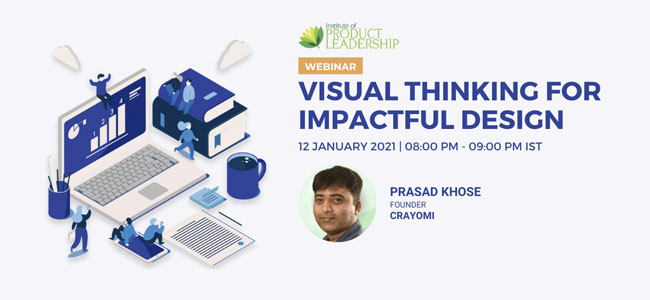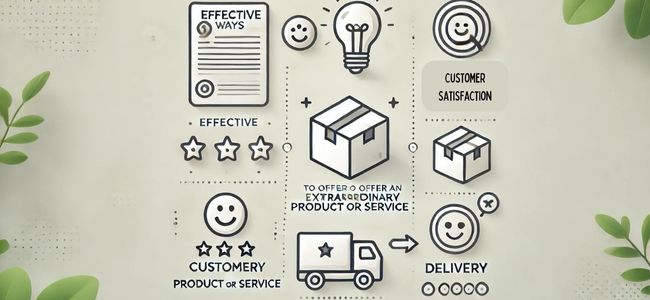At the Intersection of Design and Data
Webinar with Hunter Whitney, UX Expert and Instructor
Understanding data and finding meaning in large and complicated data sets is an important aspect of user experience (UX) design. Data-driven insights can help companies to predict their users’ behaviour, which in turn, can aid in UX Design.
The Institute of Product Leadership (IPL) was privileged to have Hunter Whitney speak on the very interesting topic of “Integrating Product/UX Design and Data Science”, on July 8th, 2017. Hunter is a Consultant and Instructor on human-centered design strategy for data-intensive applications and visualizations. He is the author of the book, “Data Insights: New Ways to Visualize and Make Sense of Data.”
At the outset, Hunter asserted that design thinking, a very human-centred experience, is a mindset and an approach to solving problems. It is an iterative process that has five stages: empathize, define, ideate, prototype, and test.
The Institute of Product Leadership (IPL) was privileged to have Hunter Whitney speak on the very interesting topic of “Integrating Product/UX Design and Data Science”, on July 8th, 2017. Hunter is a Consultant and Instructor on human-centered design strategy for data-intensive applications and visualizations. He is the author of the book, “Data Insights: New Ways to Visualize and Make Sense of Data.”
At the outset, Hunter asserted that design thinking, a very human-centred experience, is a mindset and an approach to solving problems. It is an iterative process that has five stages: empathize, define, ideate, prototype, and test.
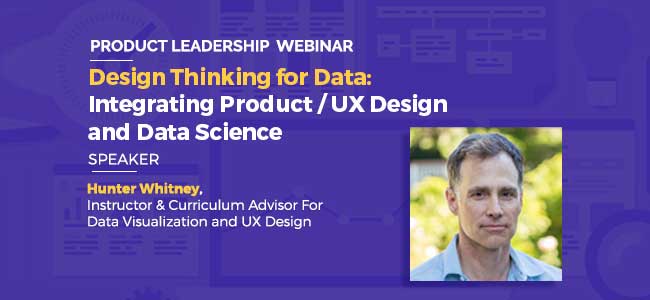
Upcoming Events
[add_eventon_list hide_past="yes" hide_empty_months="yes" event_count="15" event_type="105,127,93" number_of_months="4" ]
Hunter stated that design is very important at every level of data visualization and alerted everyone to see what they can learn from the data which has been collected and use that for the design process. He suggested that practitioners should not get lost in the individual metrics and should make sure that they saw the big picture! Hunter reiterated that design thinking is about thinking in a holistic way even though a lot of actual problem solving is very detailed. This thought can be summed up in the following quote by Ben Shneiderman, an American computer scientist who has said:
“The purpose of data visualization is insight, not pictures.”
Hunter suggested that designers should find ways to connect and track data from collection to display and analyze, without allowing artificial silos to obscure the context of the data. It should never be assumed that the data available is complete and correct. It is best to simplify the process of working with data and prioritize what you display to your users based on an understanding of them.
At the end of the webinar, Hunter expertly handled interesting questions from the webinar attendees. He recommended great tools to be used for data visualization and how to make choices on what data had to be collected while developing a product. He pointed out that what was vital was to learn how to approach the data, know the users and understand the context, since these would never change – tools would probably keep changing over time.
“The purpose of data visualization is insight, not pictures.”
Hunter suggested that designers should find ways to connect and track data from collection to display and analyze, without allowing artificial silos to obscure the context of the data. It should never be assumed that the data available is complete and correct. It is best to simplify the process of working with data and prioritize what you display to your users based on an understanding of them. At the end of the webinar, Hunter expertly handled interesting questions from the webinar attendees. He recommended great tools to be used for data visualization and how to make choices on what data had to be collected while developing a product. He pointed out that what was vital was to learn how to approach the data, know the users and understand the context, since these would never change – tools would probably keep changing over time.
Facebook
Twitter
LinkedIn
Past Events
Tagged IPL TV-Speaker Series
About Institute of Product Leadership
University Programs
Product Management Course
Technology Management Course
Certificate Programs
Product Community
Free Resources
Toolkits & Templates
